Yes, Belfast is definitely worth visiting. The city is rich in history, culture, and vibrant attractions, making it an exciting destination for travelers. You can explore the Titanic Belfast museum, stroll through the historic Cathedral Quarter, and enjoy the beautiful Botanic Gardens. Additionally, Belfast offers a lively arts scene, diverse dining options, and friendly locals. During my visit to Belfast, I was really impressed by its unique blend of old and new, as well as the warm hospitality of its residents.
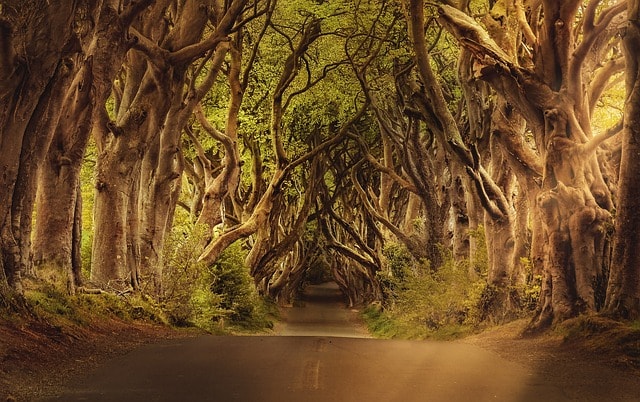
Is Belfast Worth Visiting for Tourists?
Belfast is worth visiting for tourists because of its rich history, vibrant cultural scene, and stunning natural beauty. This dynamic city offers a unique blend of the past and present, with historical landmarks like the Titanic Belfast and Crumlin Road Gaol providing a glimpse into its storied past. The cultural scene is equally compelling, with theaters, music venues, and annual festivals that showcase local and international talent. The Cathedral Quarter buzzes with energy, offering a lively mix of pubs, restaurants, and street art.
Rich Historical Significance
Belfast, the capital of Northern Ireland, is a city steeped in history. Visitors can explore significant sites such as the Titanic Belfast museum, which tells the story of the ill-fated RMS Titanic, and the Crumlin Road Gaol, a historic jail with guided tours. The city's past, marked by the Troubles, is also reflected in the murals and peace walls, offering a unique insight into its complex history.
Cultural Attractions
Belfast boasts a vibrant cultural scene with numerous museums, galleries, and theatres. The Ulster Museum offers a wide range of exhibits, including art, history, and natural sciences. The Cathedral Quarter is known for its arts and music scene, with many pubs and venues hosting live performances.
Beautiful Landscapes and Nature
The city's proximity to stunning landscapes makes it an excellent destination for nature lovers. Visitors can explore the beautiful Belfast Hills, enjoy the lush Botanic Gardens, or take a day trip to the nearby Giant's Causeway, a UNESCO World Heritage Site known for its unique geological formations.
Friendly Atmosphere and Local Cuisine
Belfast is known for its warm and welcoming locals. The city's food scene has also flourished, with a variety of restaurants offering traditional Irish cuisine as well as international dishes. The St. George's Market, one of the oldest markets in the UK, is a must-visit for sampling local produce and delicacies.
Accessibility and Accommodation
Belfast is easily accessible, with well-connected transportation options including an international airport. The city offers a range of accommodations, from luxury hotels to budget-friendly hostels, catering to all types of travelers.
Why Is Belfast Worth Visiting for History Enthusiasts?
Belfast is worth visiting for history enthusiasts because of its wealth of historical sites, museums, and rich cultural heritage. Among the top attractions is the Titanic Museum, where visitors can explore the city's maritime history and the story of the infamous ship. Belfast’s rich history is evident in its many historical sites and museums, making it a fascinating destination for history enthusiasts among other European cities. Each year, numerous people visit Belfast to experience its historical attractions that provide a deep dive into its storied past, from the industrial era to the modern day.
Titanic Belfast
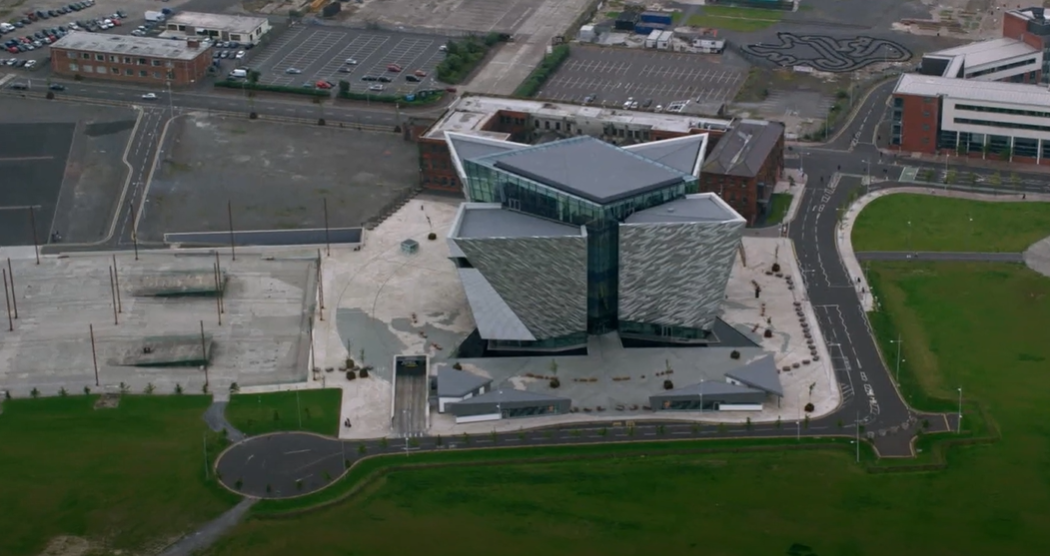
Titanic Belfast is one of the city’s most iconic landmarks and a must-visit for anyone interested in maritime history. This world-class museum is located at the site where the RMS Titanic was built, in the historic shipyard of Harland & Wolff. The museum's interactive exhibits, which cover nine galleries, bring the story of the Titanic to life, from its conception and construction to its tragic maiden voyage and legacy.
Visitors can explore full-scale reconstructions and discover the personal stories of those who built and sailed on the Titanic. The museum also features a unique underwater exploration theater that provides a view of the Titanic as it lies on the seabed. Additionally, the slipways outside the museum, where the Titanic and her sister ship Olympic were launched, are now a public space for visitors to explore and reflect.
Belfast Castle
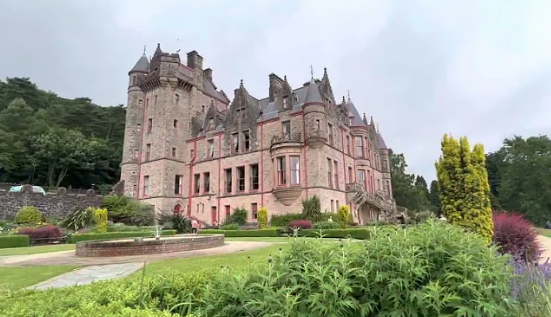
Belfast Castle, perched on the slopes of Cave Hill, offers stunning views over the city and Belfast Lough. The castle, which dates back to the 12th century, has been rebuilt several times and now stands as a beautiful example of Scottish baronial architecture. Surrounded by well-maintained gardens, Belfast Castle is perfect for a leisurely stroll.
Inside Belfast Castle, visitors can learn about its history and the various families who have lived there. The castle’s visitor center provides detailed information on the site’s history and the natural environment of Cave Hill. Additionally, Belfast Castle is a popular venue for events and weddings, adding to its charm and appeal.
What Cultural Attractions Make Belfast Worth Visiting?
Belfast is a hub of cultural activity, with a vibrant arts scene and numerous cultural attractions that make it worth visiting. From museums and galleries to theaters and historic districts, the city offers a rich cultural experience.
Ulster Museum
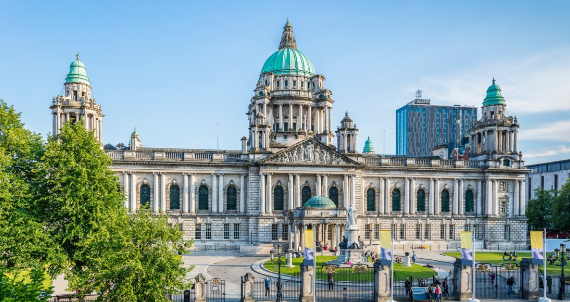
The Ulster Museum is Northern Ireland’s premier museum, located in the Botanic Gardens in the heart of Belfast. The museum’s extensive collection spans art, history, and natural sciences, offering something for everyone. Visitors can explore the history of Northern Ireland, from ancient times to the present day, through the museum’s engaging exhibits.
The art collection includes works by local and international artists, while the natural sciences section features fascinating displays on the region’s geology and wildlife. One of the museum’s highlights is the extensive collection of artifacts from the Spanish Armada, which were recovered from the wreck of the Girona.
Grand Opera House
The Grand Opera House is Belfast’s premier theater, known for its stunning Victorian architecture and rich history. The theater hosts a diverse range of performances, including opera, ballet, drama, and musicals. It has been a cultural cornerstone of Belfast since it opened in 1895.
Visitors to the Grand Opera House can enjoy a behind-the-scenes tour, which offers a glimpse into the history and workings of this historic venue. The tour includes access to the theater’s beautiful auditorium, backstage areas, and dressing rooms. Attending a performance at the Grand Opera House is a must for anyone interested in the performing arts.
Cathedral Quarter
The Cathedral Quarter is Belfast’s cultural and artistic hub, named after St. Anne’s Cathedral, which sits at its heart. This historic district is known for its cobblestone streets, vibrant street art, and eclectic mix of bars, restaurants, and galleries. The area is a hotspot for creative activities and cultural events.
Visitors can explore the many art galleries and studios in the Cathedral Quarter, which showcase the work of local artists. The district is also home to some of Belfast’s best pubs and live music venues, where visitors can enjoy traditional Irish music and contemporary performances. The Cathedral Quarter is particularly lively during festivals and cultural events, such as the Belfast International Arts Festival and the Cathedral Quarter Arts Festival.
What Outdoor Activities Make Belfast Worth Visiting?
Belfast’s natural beauty and green spaces make it an excellent destination for outdoor activities. The city offers a variety of options for nature enthusiasts and adventure seekers. The Belfast Botanic Gardens provide a tranquil escape in the heart of the city, featuring lush landscapes, the historic Palm House, and the Tropical Ravine. For hiking and stunning views, Cave Hill Country Park is a must-visit, with trails leading to the summit of Cave Hill, offering panoramic views over Belfast and beyond. The park also includes archaeological sites and the historic Belfast Castle. Another great outdoor activity is walking or cycling along the Lagan Towpath, a scenic route that follows the River Lagan from Belfast to Lisburn, passing through parks and nature reserves. This path offers a peaceful retreat with opportunities to observe local wildlife. These outdoor activities make Belfast an appealing destination for those looking to explore nature and enjoy the great outdoors.
Belfast Botanic Gardens
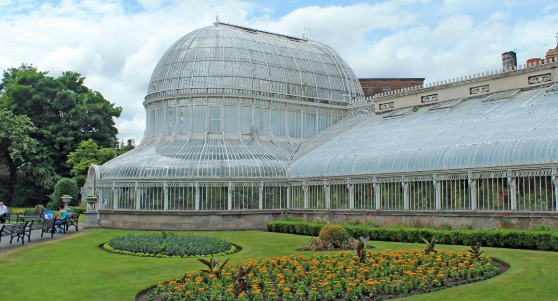
The Belfast Botanic Gardens are a tranquil oasis in the heart of the city, providing a perfect escape from the hustle and bustle. Established in 1828, the gardens feature a variety of plant species from around the world, beautifully landscaped grounds, and historic glasshouses.
The Palm House, one of the oldest Victorian glasshouses in the world, is a highlight of the gardens. It houses a stunning collection of tropical plants and is a must-see for visitors. The Tropical Ravine, another glasshouse in the gardens, features a unique sunken garden filled with exotic plants. The gardens are also home to the Ulster Museum, making it easy to combine a visit to both attractions.
Cave Hill Country Park
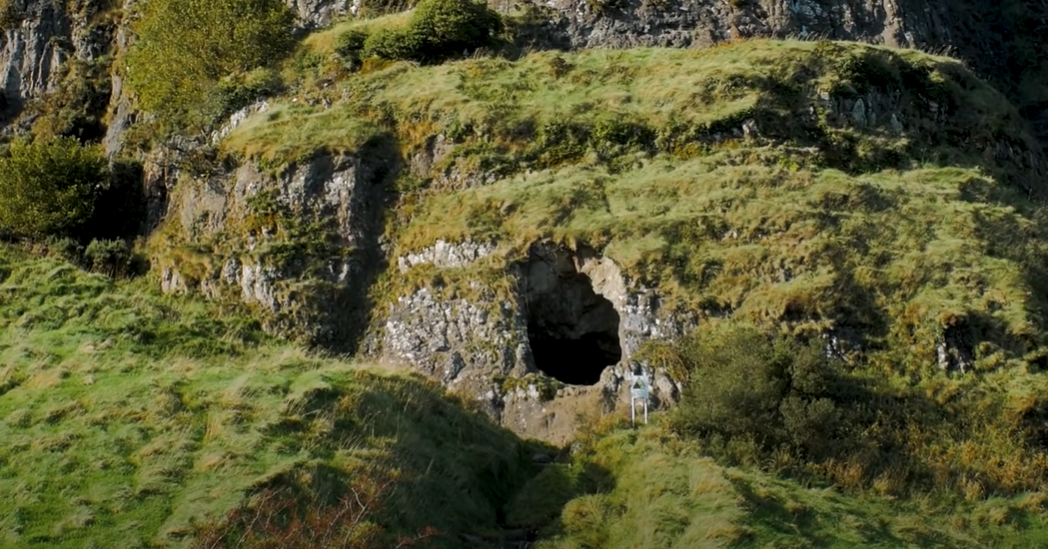
Cave Hill Country Park is a popular destination for hikers and nature lovers, offering stunning views over Belfast and beyond. The park is named after the five caves located on the side of the hill, which are believed to have been used for storage by early settlers.
One of the park’s main attractions is the hike to the summit of Cave Hill, which features Napoleon’s Nose, a basaltic outcrop that is said to have inspired Jonathan Swift’s description of Gulliver’s Travels. The hike offers panoramic views of the city, Belfast Lough, and the surrounding countryside. The park also features several trails, archaeological sites, and the historic Belfast Castle.
Lagan Towpath
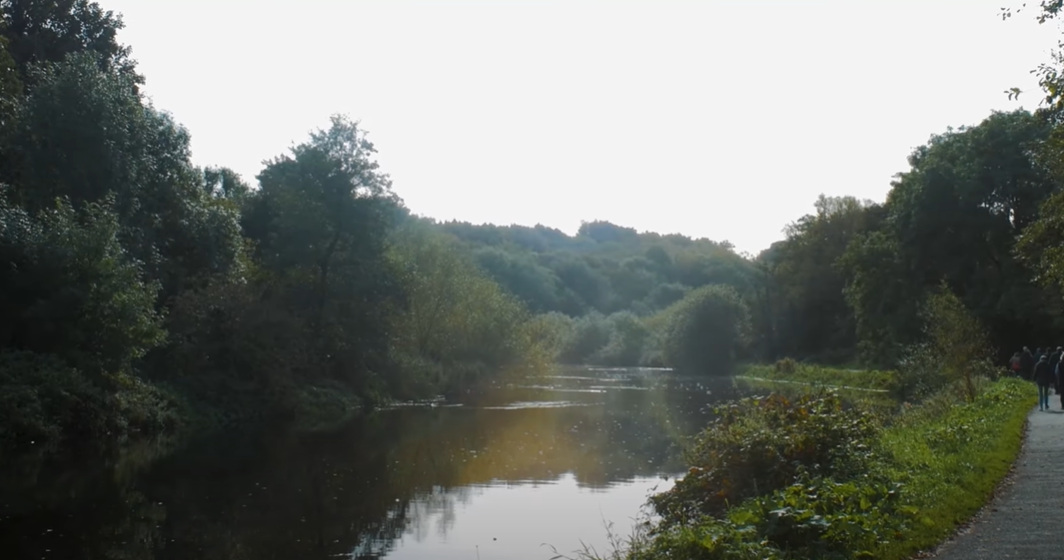
The Lagan Towpath is a scenic walking and cycling route that follows the River Lagan from Belfast to Lisburn. The towpath offers a peaceful escape from the city, with lush greenery, wildlife, and picturesque views along the way.
The towpath is well-maintained and suitable for all ages and fitness levels. It passes through several parks and nature reserves, providing plenty of opportunities to stop and enjoy the surroundings. The towpath is also a great way to explore the Lagan Valley Regional Park, which is home to a variety of flora and fauna.
What Nearby Destinations Make Belfast Worth Visiting?
Belfast’s location makes it an excellent base for exploring some of Northern Ireland’s most famous and beautiful destinations. A short drive or train ride from the city centre, these nearby attractions are well worth a visit.
Giant’s Causeway
The Giant’s Causeway is one of Northern Ireland’s most iconic natural landmarks and a UNESCO World Heritage Site. Located on the north coast, this geological wonder consists of around 40,000 interlocking basalt columns, formed by volcanic activity millions of years ago.
Visitors can explore the causeway and learn about its geological significance at the visitor center. The causeway is also steeped in local legend, with tales of the giant Finn McCool who is said to have built the causeway as a bridge to Scotland. The dramatic coastal scenery and unique rock formations make the Giant’s Causeway a must-visit destination.
Carrick-a-Rede Rope Bridge
The Carrick-a-Rede Rope Bridge is another popular attraction on the north coast, offering an exhilarating experience and stunning views. The bridge, which spans 20 meters (66 feet) and is suspended 30 meters (98 feet) above the sea, connects the mainland to the tiny island of Carrick-a-Rede.
Originally used by fishermen to access salmon nets, the bridge is now a popular tourist attraction. Crossing the bridge provides a thrilling experience and spectacular views of the surrounding cliffs and coastline. The area is also rich in wildlife, with seabirds and marine life frequently spotted.
Bushmills Distillery
The Old Bushmills Distillery, located in the village of Bushmills, is one of the oldest distilleries in the world, with a history dating back to 1608. The distillery offers guided tours that take visitors through the whiskey-making process, from malting and fermentation to distillation and aging.
The tour includes a visit to the distillery’s historic buildings and a tasting session where visitors can sample a range of Bushmills whiskeys. The distillery’s shop offers a selection of whiskeys and souvenirs, making it a great last place to visit to pick up a unique gift. Visiting Bushmills Distillery is a must for whiskey enthusiasts and those interested in Northern Ireland’s rich heritage.
Why Is Belfast Worth Visiting for Food Lovers?
Belfast’s culinary scene has blossomed in recent years, with a diverse array of dining options that cater to all tastes and budgets. From traditional Irish fare to contemporary cuisine, the city’s food offerings are sure to delight any food lover.
Traditional Irish Cuisine
Belfast offers plenty of opportunities to sample traditional Irish cuisine. Many pubs and restaurants serve classic dishes such as Irish stew, soda bread, and champ (mashed potatoes with scallions). Local specialties like boxty (potato pancakes) and Ulster fry (a hearty breakfast) are also must-tries.
For a taste of Belfast’s culinary heritage, visit St. George’s Market, one of the oldest markets in Ireland. The market offers a wide range of fresh produce, local delicacies, and artisanal products. It’s a great place to sample traditional dishes and meet local producers.
Contemporary Dining
Belfast’s dining scene is not limited to traditional fare. The city boasts a number of contemporary restaurants that offer innovative and international cuisine. The Michelin-starred restaurant OX is known for its creative dishes and focus on seasonal, locally-sourced ingredients.
Other notable restaurants include The Muddlers Club, which offers modern European cuisine, and Eipic, which is renowned for its fine dining experience. Belfast’s diverse culinary offerings ensure that there is something to satisfy every palate.
Pubs and Craft Beer
No visit to Belfast is complete without experiencing its vibrant pub culture. The city is home to numerous historic pubs, many of which offer live music and a warm, welcoming atmosphere. The Crown Liquor Saloon, a beautifully preserved Victorian pub, is a must-visit for its ornate interior and selection of local beers.
Belfast also has a growing craft beer scene, with several microbreweries and taprooms offering unique brews. Boundary Brewing and Bullhouse Brew Co. are two local favorites, known for their innovative and flavorful beers. A pub crawl through Belfast’s best pubs and breweries is a great way to experience the local culture and enjoy some excellent drinks.
What Tips Can Make Your Visit to Belfast Worthwhile?
Planning your trip to Belfast with a few key tips in mind can enhance your experience and ensure you make the most of your visit.
Best Time to Visit Belfast
The best time to visit Belfast is during the late spring to early autumn months (May to September). During this period, the weather is milder and more conducive to outdoor activities. June to August are the warmest months, with longer daylight hours, making it an ideal time for sightseeing and exploring the city’s parks and gardens.
September is also a great time to visit, as the weather remains pleasant, and the summer crowds have diminished. Additionally, Belfast hosts several festivals and events throughout the year, so it’s worth checking the local calendar to plan your visit around these cultural highlights.
Transportation Tips
Belfast is a compact city, making it easy to navigate on foot or by public transport. The city’s bus network, operated by Translink, is extensive and covers most areas of interest. For a more scenic and informative way to get around, consider taking a hop-on-hop-off bus or walking tour, which stops at major attractions.
Taxis and ride-sharing services are also readily available. If you plan to explore the surrounding countryside or nearby attractions, renting a car can provide greater flexibility. However, be aware that driving in the city center can be challenging due to narrow streets and traffic.
Safety Tips
Belfast is generally a safe city for tourists, but it’s always wise to take standard precautions. Keep an eye on your belongings, especially in crowded areas and public transport. Avoid isolated areas, particularly at night, and stick to well-lit, populated streets.
It’s also advisable to be mindful of local customs and historical sensitivities. While Belfast has made significant strides in moving past its troubled history, discussions about political and religious issues can still be sensitive topics. Show respect for local culture and be aware of the city’s history when engaging in conversations.
FAQs On Is Belfast Worth Visiting?
1. Is Belfast safe for tourists?
Yes, Belfast is generally safe for tourists. Exercise standard precautions, such as keeping an eye on your belongings and avoiding isolated areas at night.
2. What is the best time to visit Belfast?
The best time to visit Belfast is from late spring to early autumn (May to September) when the weather is mild and conducive to outdoor activities.
3. How can I get around Belfast?
Belfast is easy to navigate on foot, and public transport options include buses and taxis. Hop-on-hop-off bus tours are also a convenient way to see the city's major attractions.
4. Are there any festivals in Belfast?
Yes, Belfast hosts several festivals throughout the year, including the Belfast International Arts Festival, the Cathedral Quarter Arts Festival, and the Belfast Film Festival.
5. What are the must-visit attractions in Belfast?
Must-visit attractions in Belfast include Titanic Belfast, Belfast Castle, the Ulster Museum, the Grand Opera House, and the Cathedral Quarter.
